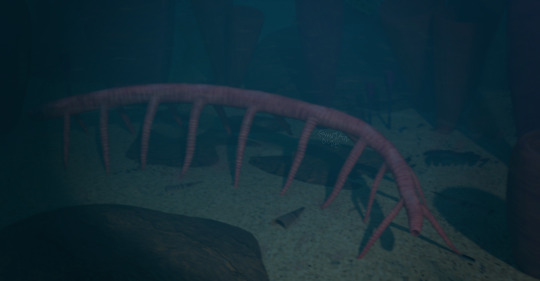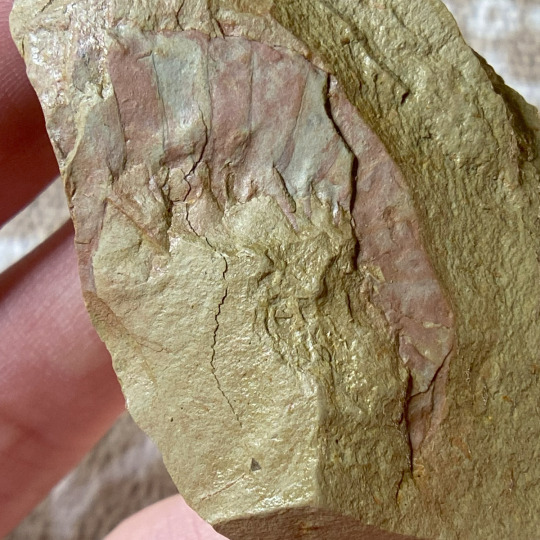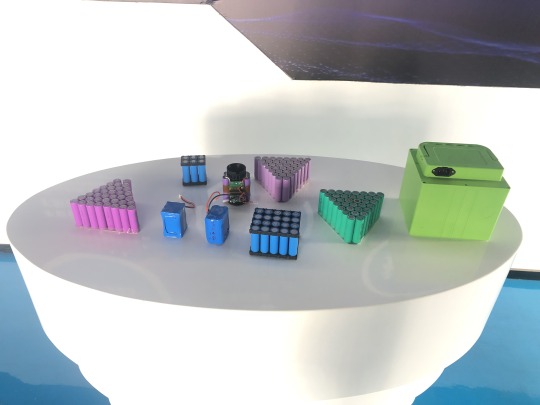#chengjiang
Explore tagged Tumblr posts
Text


#極道畫師
#江澄
#Chengjiang
#魔道祖師
#GrandmasterOfDemonicCultivation
#JidouArtStudio
#illustration
江澄を捧げて、サポートに感謝して、幸運が続いています( *ˊᵕˋ)✩︎
Offer Chengjiang,thank you your support,and have good lucky (ૢ˃ꌂ˂⁎)
獻上江澄,感謝支持,好運連連(ღˇ◡ˇღ)
#極道畫師#水墨画#acg#my art#illustration#ink painting#二次元水墨#二次元#手繪#江澄#魔道祖師#Chengjiang#Grandmaster Of Demonic Cultivation
82 notes
·
View notes
Text

Before we know it, we get to see how the Spikey Lad protects itself - as a different creature, one of the large shrimpy things, comes out from the gloom! It reaches out to try and grab the spikey lad... and gets a pincer full of sharp spikes instead! The shrimpy thing doesn't make a sound, simply swims away quickly, while we tumble off of the spikey lad and float through the currents
As we float around, we see many of the Orbs from before, which propel themselves through the current gently. They come in a variety of colors and shapes, and they surround all of us in a strange otherwordly swarm.

As we float around among the orbs, we are once again faced with Decisions. There are many things we haven't seen yet here in the Cambrian...
This is a continuation of these posts and is an ongoing choose your own adventure story! (1) (2) (3) (4) (5) (6) (7) (8) (9) (10) (11) (12) (13) (14)
#palaeoblr#Paleoblr Choose Your Own Adventure#Maotianshan Shales#Chengjiang Biota#Cambrian#Choose Your Own Adventure
239 notes
·
View notes
Text
Fossil Friday: Hallucigenia

Believe it or not, this walking caltrop is actually an animal called Hallucigenia sparsa. It is a genus of lobopodian, basically a stubby-legged worm. Kind of like this modern day velvet worm:

Hallucigenia was a tiny animal no bigger than 5.5. cm long, as shown in the photo below where the blue line represents 3mm.

It had up to 10 legs, the first 2 or three pairs were slender and featureless but the rest ended in paired claws.

Above the trunk, or main part of the body, are seven pairs of spines or sclerites. The longer end is the head which has an anteroventral (front/bottom) mouth and two simple eyes. The "tail" droops down on the other end.

It was first found in the Burgess Shale in Canada along with all the other crazy soft-bodied Cambrian fauna found there. A second species, H. fortis, was found in the Chengjiang Biota of China (Maotianshan Shale.)

It lived on the sea floor and it is often found in association with the sponge Vauxia, which it may have eaten.

#paleontology#fossils#geology#fossilfriday#hallucigenia#velvet worm#lobopod#burgess shale#Maotianshan Shale#canada#china#paleontologist#weird animals
60 notes
·
View notes
Text
Perspectives #7

"Garden of Cambrian Sights”
Innovatiocaris/Microdictyion/Haikouichthys/Eldonia/Fortiforceps
Cambrian, 518 million years ago, Maotianshan Shales (China) The Chengjiang Biota was composed of a hugely diverse array of invertebrates. Just in this picture alone, you have Innovatiocaris, Microdictyon, Fortiforceps, Eldonia, Haikouichthys, primitive annellids, priapulida, sponges, and echinoderms. It might not have always looked as helish as this, though... Based on the third panel of "The Garden of Earthly Delights" by Hieronymous Bosch.
This is a part of my Perspectives series! You can find previous entries in #perspectives on my blog.
#yee art#paleoart#paleoblr#palaeoblr#cambrian#fossil#nature art#ocean#innovatiocaris#lobopod#anomalocaris#cambrian explosion#worms#eldonia#haikouichthys#fortiforceps#sponge#shrimp#perspectives
85 notes
·
View notes
Text

Paucipodia inermis, an unarmored 15cm long lobopopodian from the Chengjiang Biota of Yunnan China.
54 notes
·
View notes
Note
Jiang cheng jiang cheng jiang cheng jiang cheng jiang cheng jiang cheng Jiang cheng jiang cheng jiang cheng jiang cheng jiang cheng jiang cheng Jiang cheng jiang cheng jiang cheng jiang cheng jiang cheng jiang cheng Jiang cheng jiang cheng jiang cheng jiang cheng jiang cheng jiang cheng Jiang cheng jiang cheng jiang cheng jiang cheng jiang cheng jiang chengJiang cheng jiang cheng jiang cheng jiang cheng jiang cheng jiang cheng jiang che-

190 notes
·
View notes
Text

A fossilized appendage of an indeterminate radiodont from the Chengjiang Biota in Yunnan, China. These radiodonts or "anomalocarids" were all formerly assigned to Anomalocaris, but have since been moved into genera outside Anomalocarididae. Primarily, the two species, Anomalocaris saron and Anomalocaris kunmingensis were moved into Houcaris saron and Guanshancaris kunmingensis respectively.
#radiodont#radiodonta#fossils#paleontology#palaeontology#paleo#palaeo#houcaris#guanshancaris#anomalocaris#anomalocarididae#cambrian#paleozoic#prehistoric#science#paleoblr#ホウカリス#グアンシャンカリス#アノマロカリス#ラディオドンタ類#化石#古生物学
33 notes
·
View notes
Text


only just realizing how tiny hallucigenia and opabinia were in comparison to humans & anomalocaris wowww
(photo from link below)
3 notes
·
View notes
Text
In case you, like me, are curious about these creatures, here's an open-access article by García-Bellido et al., "A new vetulicolian from Australia and its bearing on the chordate affinities of an enigmatic Cambrian group" (BMC Evolutionary Biology, Oct 2014). It includes lots of fossil pictures, if that interests you. There's other interesting images and information to be found in Shu et al. "Primitive deuterostomes from the Chengjiang Lagerstätte (Lower Cambrian, China)" (not open access -- Nature 414, 419–424 (2001). https://doi.org/10.1038/35106514). I was surprised to learn that these creatures are just a few cm long -- the detail of this wonderful animation had me envisioning something larger.
Rectangl
(alt: vetulicola rectangulata swimming, it's an early stem chordate, somewhat tadpole-like motion, the 'head' in rectangulata has a rectangle shape in the front and more oval at the back, there's a line dividing the top and bottom half of the 'head' which contains five round openings identified as gill slits. It has a pointy Shark like dorsal fin at the top followed by a flat segmented tadpole like tail sticking out after the top dorsal fin)
1K notes
·
View notes
Text
La découverte d'un fossile éclaire les débuts de l'évolution des systèmes nerveux des animaux
See on Scoop.it - EntomoNews
Un fossile préservé du Cambrien offre aujourd'hui un aperçu fascinant de l'évolution du système nerveux chez les animaux primitifs.
La découverte d'un fossile met en lumière l'évolution précoce du système nerveux animal
par Brice Louvet 13 janvier 2025, 18 h 05 min
Les ecdysozoaires regroupent un vaste ensemble d’animaux qui comprend les arthropodes (insectes, crustacés ou arachnides), les nématodes (vers ronds) et des groupes moins connus comme les priapulides, kinorhynches et loricifères. Ces animaux partagent une caractéristique clé : la mue, un processus où ils remplacent périodiquement leur cuticule externe pour croître.
Ce groupe, qui inclut des formes allant des insectes volants aux minuscules organismes aquatiques, fascine les biologistes par sa diversité. Toutefois, un aspect intrigue tout particulièrement : leur système nerveux central, composé d’un cerveau et d’un cordon nerveux ventral. Certains ecdysozoaires, comme les priapulides, possèdent un cordon nerveux unique qui longe leur corps, tandis que d’autres, comme les arthropodes, disposent de cordons nerveux appariés avec des ganglions segmentés. Pourquoi ces différences ? Et surtout, à quoi ressemblait le système nerveux de leur ancêtre commun ?
Preservation and early evolution of scalidophoran ventral nerve cord | Science Advances, 10.01.2025 https://www.science.org/doi/10.1126/sciadv.adr0896
------
NDÉ
Image : Tubular incomplete specimens of Eopriapulites sphinx from the early Cambrian Kuanchuanpu Formation, showing their ventral nerve cord. Credit: Science Advances (2025). DOI: 10.1126/sciadv.adr0896
via Fossil discovery sheds light on the early evolution of animal nervous systems, 10.01.2025 https://phys.org/news/2025-01-fossil-discovery-early-evolution-animal.html
Traduction
En étudiant des fossiles de la formation Fortunian Kuanchuanpu (par exemple, Eopriapulites et Eokinorhynchus), du biote Chengjiang (par exemple, Xiaoheiqingella et Mafangscolex) et de l'Ottoia prolifica de Wuliuan, les chercheurs ont identifié des structures allongées longeant la face ventrale de ces organismes anciens.
« Ces structures ressemblent beaucoup aux cordons nerveux ventraux observés chez les priapulidés modernes », expliquent les docteurs Deng Wang et Jean Vannier. Leur analyse indique que ces fossiles conservent des empreintes de cordons nerveux ventraux uniques, ce qui met en lumière l'état ancestral probable des scalidophores.
L'analyse phylogénétique soutient l'hypothèse qu'un seul cordon nerveux ventral était l'état ancestral des scalidophores. De plus, le regroupement évolutif des nématoïdes et des panarthropodes (un clade qui comprend les arthropodes, les tardigrades et les onychophores) suggère que leur ancêtre commun avait probablement aussi un seul cordon nerveux.
« Cela nous amène à proposer que l'ancêtre commun de tous les ecdysozoaires possédait un seul cordon nerveux ventral », a déclaré le Dr Chema Martin-Durán. « Les cordons nerveux jumelés observés chez les arthropodes, les loricifères et les kinorhynques ont probablement évolué indépendamment, représentant des traits dérivés. »
Traduit avec DeepL.com (version gratuite)
0 notes
Text
1. the Awkwardness of Evolutionism
Xuefeng (Translated by Conglong) The Awkwardness of Evolutionism According to the theory of Evolution, humans were evolved from apes, and apes could possibly be evolved from rabbits, and rabbis from worms. Worms could be evolved from microbes; microbes from single-cell organisms, which could possibly come into being by accidence in the sea, the vast “organic and fertile soup”. Evolution is the result of inheritance, mutation and natural selection.
Evolution is a slow and gradual process.
Evolution is in accordance with the “natural selection, the law of jungle and survival of the fittest.”
But is this really the truth?
The process of one organism evolves to another organism is a very long process. A rabbit can’t evolve to a monkey overnight. One seed, from germination, growth, flowering, fruiting to decline, there is a process. Any step of process could not be skipped. If we take picture of the seed every day, we will be able to see the slow and gradual process of its change. Evolutionism firmly believes that humans are evolved from apes. There must be a slowly changing process and some “intermediates”, that is to say, from an ape to a man, it should at least have some steps of intermediates, it is impossible that an ape will leap to a man, so where are those intermediates? What are they?
In 1924, “scientists” found fossils which they called “Australopithecus africanus” (Southern ape of Africa) near the famous diamond town, Kimberley, South Africa, later, they found more, “Australopithecus boisei” (it is also called “Eastern African”), “Australopithecus afrensis”, “Australopithecus garhi etc.??Particularly, they think “Java Man” was the “intermediate” between ape and human. Based on these facts, evolutionists self-deceivingly claimed that they had made “great achievements”.
But please don’t be too satisfied; self-entertaining will not bring joys to others.
According to the calculation based on molecular biology, it was between four and five million years ago when men and apes separated, so from four million years ago till the time of earliest historical records, how human beings evolved? Were there no any processes or intermediates? If not, does that mean evolution stopped at the stage? If yes, please show the evidence.
Again, I want to ask evolutionists, which animal were apes evolved from? Can you please give us evidences too?
How can you prove that the four million years old fossils you found are the ancestors of humanity? Just because their shapes look alike? Can you prove that chicken is the ancestor of swan because you found a few chicken bones?
At the end of the twentieth century, a large number of fossils were discovered in Chengjiang County, Yunnan Province, China.??The research showed that today’s diverse animals were actually appearing suddenly on the earth, and it also proved the correctness of theory of “Cambrian Explosion”, which??happened 530 million years ago.
The theory of “Cambrian Explosion” says that over 90% of animal species were appearing suddenly in a “moment” which is less than one percent time of the earth developing history. It is like mushrooms growing everywhere along ditches and grasslands after an overnight drizzle, which is by no means a slow and gradual process, so do evolutionists still have any far-fetched explanations on this?
Let me ask more: the obtuse angle of three congruent rhomb at the bottom of a beehive is 109°28', and the acute angle is 70°32', which is the most economic and reasonable structure, so is this “wisdom” also from evolution? Rooster crowing, chick breaking its egg shell, bird migrating, spider webbing, eel discharging, chameleons changing skin colour, weaver bird nestling, silkworm making cocoon, snail making shell, hound tracking, pigeon going home etc.. Do all these wisdom of animals and insects come from evolution?
Let’s make the conclusion by quoting the wisdom of Darwin, the originator of the theory of evolution, "If it could be demonstrated that any complex organ existed which could not possibly have been formed by numerous, successive, slight modifications, my theory would absolutely break down".
The birth of Lifechanyuan has proved evolution theory has “absolutely broken down”
Evolutionism cannot prove the origin of humanity.
Human beings were not evolved from animals at all.
So, what about the sayings in Bible?
Please read the origin of humanity 2.
生命禅院英文网站:http://www.lifechanyuan.org 生命绿洲英文网站:http://newoasisforlife.org 生命禅院国际大家庭:http://www.smcyinternationalfamily.org
0 notes
Text
Breaking Through the Clouds
Time to Read: 1 minute A few years ago, Captain Jiang Ting of the anti-drug unit of the Public Security Bureau in G City died in the line of duty. Yet, when the Vice Captain of the criminal investigation Unit in J City, Yan Xie, investigates the mysterious death of a young man at a karaoke bar, he recognises the helpful civilian Lu Chengjiang as that very Jiang Ting. Continue reading Breaking…

View On WordPress
#Adapted from a novel#Author: Huai Shang#Genre: Action#Genre: BL#Genre: Danmei#Genre: Drama#Genre: Mystery#Genre: Police Procedural#Genre: Psychological#Genre: Tragedy#Illustrator: Yin Hu Zhi Shang#Publisher: BiliBili Comics#Theme: LGBTQ#Title: Breaking Through the Clouds#Year: 2020
0 notes
Text

Truth be told, scientists aren't quite sure what's going on with this transitional arthropod's eyes! There are several hypotheses, which I show above. Turns out Eye Number was much more variable in the past than it is today - at least for these crunchy weirdos
Five Eyes (Maybe) My Guy has been interpreted in several ways - here we see three eyes on top, two below:

But in this interpretation, we have three eyes, with the lower eyes being interpreted as one giant eye:

As we get closer to Five Eyes My Guy to find out the answer, we suddenly get swept away by a current, straight towards -
THE PENISES?!?!?!
This is a continuation of these posts and is an ongoing choose your own adventure story! (1) (2) (3) (4) (5) (6) (7) (8) (9) (10)
#Maotianshan Shales#Chengjiang Fauna#Cambrian#Palaeoblr#Choose Your Own Adventure#Palaeoblr Choose Your Own Adventure
265 notes
·
View notes
Text
Fossil Friday: Marella splendens

This weird looking animal is called Marella splendens. It comes from the middle Cambrian Burgess Shale of British Columbia (and to much, much lesser extent, the Chengjiang Biota of China). Discovered by Charles Walcott, he informally called it a lace crab. In fact, this was the very first fossil he collected in 1909 when he found the Burgess Shale deposits. Walcott thought it was some sort of very odd looking trilobite.

In 1971, Harry Whittington decided to thoroughly redescribe it and came to the conclusion it was not a trilobite not a chelicerate (group that includes arachnids and horseshoe crabs) nor a crustacean. He did this on the basis of its legs, gills, and head appendages. While it may not be in any of those groups, it is an arthropod.

Marella is a very small animal ranging from a little over 2mm to nearly 25 mm (less than an inch in length). The four projections on its head make it look a bit like the top of a pitchfork which I imagine made it very hard to predate on.

There were many other interesting features of the head besides the crazy headgear. This animal apparently had no eyes which would explain the need for long antennae broken into as much as 30 segments. That's not even the weirdest part! Marella's stomach was located in the head right behind the mouth! Talk about using your stomach to think.

Marella was an active, nektobenthic swimmer that moved around just above the sea floor. It could rest on the sea floor by standing on its body appendages. It was a deposit feeder, meaning it ingested sediment to consume organic matter. The net of internal projections on the last twelve body segments would have been used to trap food particles located in water currents and to pass them along the underside of the animal. Food particles trapped in the net would be moved towards the mouth using the tips of the anterior legs.

Marella is one of the most common fossils found in the Burgess Shale. Over 25,000 specimens have been recovered and it is the second most common arthropod after trilobites. That's a lot of sea bugs.
#paleontology#fossils#marella#notatrilobitebutclose#cambrian period#cambrian explosion#burgess shale#arthropods#invertebrates#weird animals
48 notes
·
View notes
Text
Jiangxi Chengjiang New Energy Co., Ltd.
Experts in Manufacturing and Exporting Power Lithium Battery, 18650&21700 Battery Packs.





1 note
·
View note
Text

smth stylized Chengjiang fossil site logo
(Omnidens amplus)
1 note
·
View note